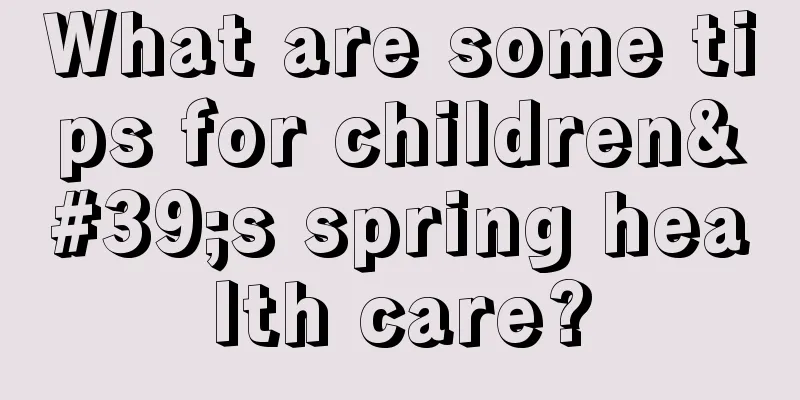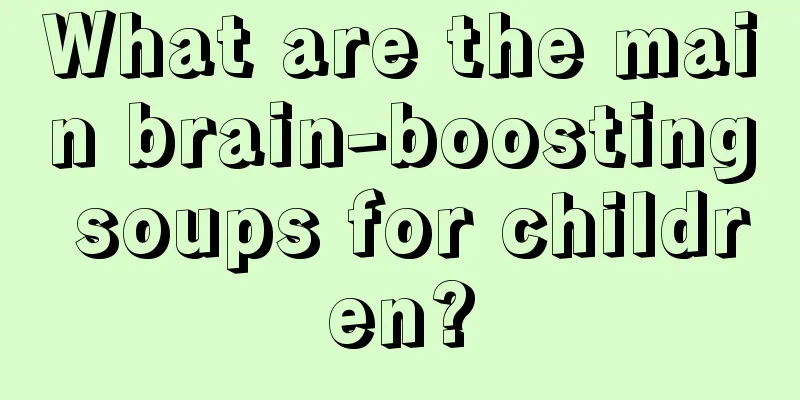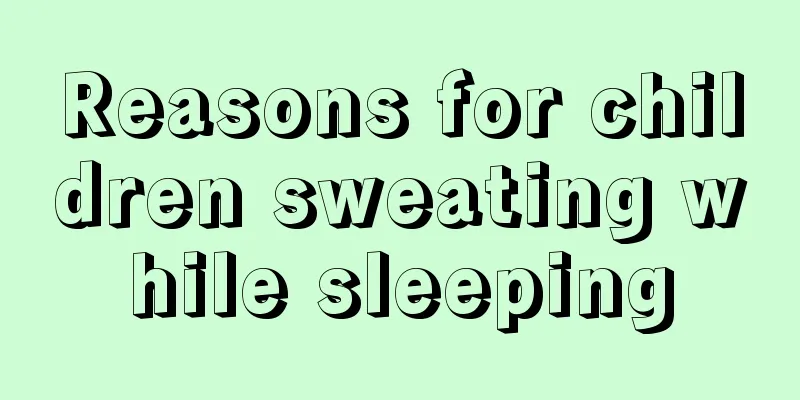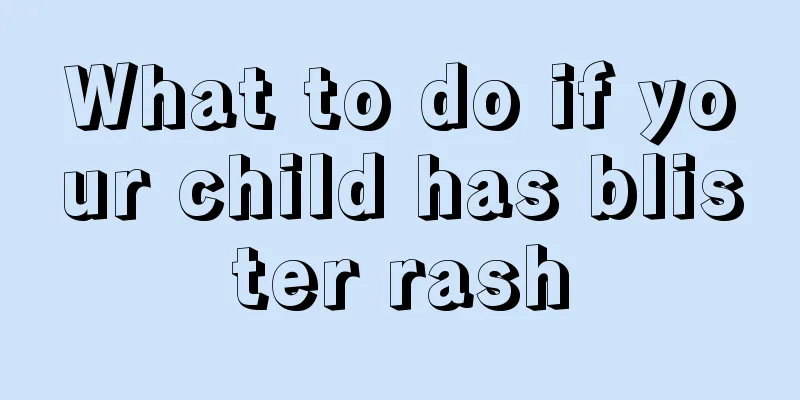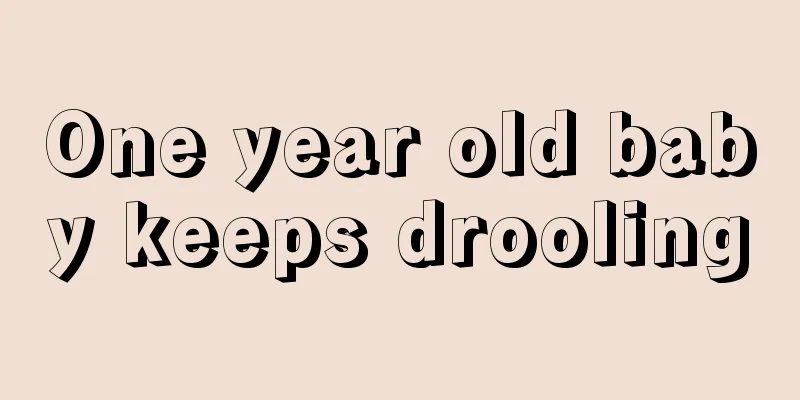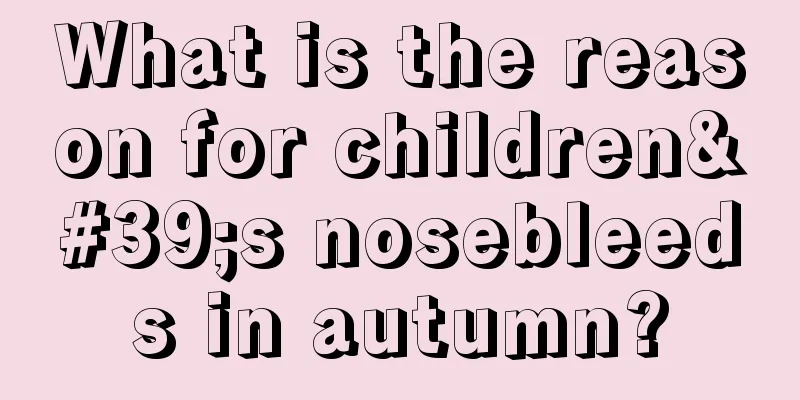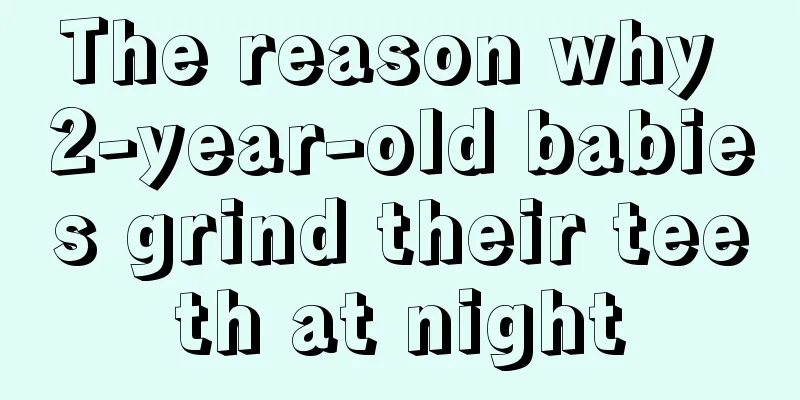Introducing several correct ways to brush children's teeth
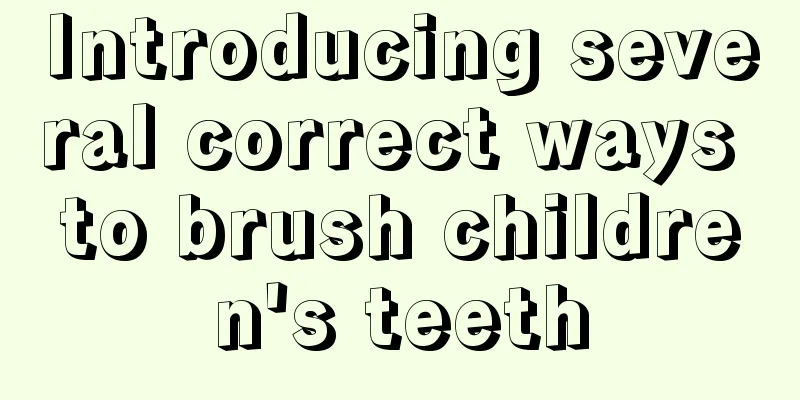
|
Here are some correct ways for children to brush their teeth. It is recommended that parents let their children develop the good habit of brushing their teeth at least twice a day. Choose a suitable small mouthwash cup. You need to choose a suitable high-quality cup, especially one with a smooth rim to ensure that it will not scratch your child's lips. Experts say: Technique is the key to proper teeth cleaning. Below I will introduce to you several correct ways for children to brush their teeth. Proper teeth cleaning technique is the key. 1. From 0 to 6 months, before the deciduous teeth grow out, rinsing the mouth is the most important thing. Supplies needed: warm boiled water, a small piece of sterilized gauze. Give your child some warm boiled water after feeding, which is equivalent to gargling. You can also use gauze dipped in warm water to gently wipe the baby's gums and mouth. 2. From 6 months to 1.5 years old, when the deciduous teeth are growing, parents should remove the plaque and soft plaque on the children's teeth every day to keep the mouth clean and cultivate the children's hygienic habits. Place the bristles of the toothbrush close to the gums and tilt it at a 45-degree angle to the tooth surface. Brush the upper teeth from top to bottom and the lower teeth from bottom to top. After brushing the outer side, you should also brush the inner side and the biting surface of the back teeth. 3. From 0 to 6 months, before the deciduous teeth grow out, rinsing the mouth is the most important thing. Supplies needed: warm water, a small piece of sterilized gauze. Technical guidance: Give your child some warm water after feeding, which is equivalent to gargling. You can also use gauze dipped in warm water to gently wipe your baby's gums and mouth. 4. From 6 months to 1.5 years old, when the deciduous teeth are growing, parents should remove the plaque and soft plaque on the children's teeth every day to keep the mouth clean and cultivate the children's hygienic habits. Supplies needed: sterile gauze or cotton swabs, warm water, toothbrush with fingertip Technical guidance: The mother sits on the sofa or bed and lets the child lie in her arms. The mother uses one hand to hold the child's head and lips, and uses the other hand to hold a clean gauze or fingertip toothbrush and dip it in warm water to clean the outer and inner sides of the child's teeth. While wiping, gently massage your child's gums to help relieve the discomfort caused by teething. 5. Between 1.5 and 3 years old, when the baby's deciduous teeth have all grown out, let him understand the process and details of brushing teeth, so as to prepare him to brush his teeth by himself in the future. Supplies needed: training toothbrush, cotton swabs. Technical guidance: The child can stand or sit on a stool, and the mother can stand behind or to the side of the child, fix the child's head with one hand, and use the other hand to hold a toothbrush dipped in warm water to brush the child's teeth (no toothpaste is needed). The order of brushing your teeth is: place the bristles of the toothbrush close to the gums and tilt it at a 45-degree angle to the tooth surface. Brush the upper teeth from top to bottom and the lower teeth from bottom to top. After brushing the outer side, you should also brush the inner side and the biting surface of the back teeth. Each surface needs to be brushed 15 to 20 times to achieve the purpose of cleaning teeth. During this period, the deciduous teeth are arranged sparsely and have shorter crowns, which can easily cause food impaction. Therefore, before brushing the teeth, the mother should first check whether there is food stuck in the child's teeth. If so, the food should be removed with a cotton swab before brushing the teeth. In addition, you should start training your baby to brush his teeth by himself. Let him imitate your movements first. 6. When the child is 2 years old, you can try to let him brush his teeth by himself. At this time, you cannot ask the child to persist for too long, just let him become proficient in these movements. Because you still need to carefully brush it again according to the above instructions. 7. From 3 to 6 years old, train your child to brush his teeth by himself and cultivate his interest in brushing teeth. Use fluoride toothpaste to prevent tooth decay. Supplies needed: toothbrush, toothpaste, mouthwash cup, and cotton swabs appropriate for the child's age. Strong recommendation: Baidu Reading APP, a free book reading tool! 1/7 Technical guidance: From the beginning, you should pay attention to letting your child master the correct brushing method and avoid excessive horizontal brushing. The wrong brushing method not only fails to clean the teeth, but also easily makes the teeth brittle. In the future, when children use a slightly harder toothbrush to brush their teeth, their gums will hurt. The correct way to brush your teeth: squeeze toothpaste onto the toothbrush (a soybean-sized amount will do), and brush vertically from top to bottom and from bottom to top along the gaps between teeth. Brush along the roots of the teeth towards the tips of the teeth, both up and down, inside and outside. The occlusal surface can be brushed horizontally. Each brushing should take at least 3 minutes, and each surface should be brushed 15 to 20 times. After brushing, rinse out all the toothpaste with clean water. Finally, my mother checked and gently wiped the places that were not cleaned with a cotton swab dipped in clean water. Choose the right dental products Choose a suitable toothbrush according to the growth of your child's deciduous teeth. If the bristles of your toothbrush become bent, you should replace it with a new one, at the latest every 6 to 8 weeks. Finger toothbrush: Use when the child has just grown 1-2 small teeth. Put it on your finger to brush your child's teeth. It can not only clean the teeth but also gently massage the gums. Silicone solid toothbrush, suitable for use when 2-3 teeth have grown out. It has a toothbrush handle that is easy for babies to hold, and the brush head is elastic and moderately hard and soft, designed for children to bite. It can not only remove the debris on the teeth, but also massage and protect the gums, which can fully satisfy the baby's desire to bite things during this period. Safety accessories ensure safety. Silicone solid toothbrush with pointed bristles: suitable for use after 8-11 teeth have grown out, it also has the functions mentioned above. It can also be used for children to practice brushing their teeth. The silicone bristles are also very soft and will not scratch your child's delicate gums. Correct way to brush teeth for children [Introduction] Technique is the key to correct teeth cleaning. From 0 to 6 months, before the deciduous teeth grow out, rinsing the mouth is the most important thing. Supplies needed: warm boiled water, a small piece of sterilized gauze. Give your child some warm boiled water after feeding, which is equivalent to gargling. You can also use gauze dipped in warm water to gently wipe your baby's gums and mouth. During the period of 6 months to 1.5 years old, when the deciduous teeth are growing, parents should remove the plaque and soft scale on their children's teeth every day to keep their mouths clean and cultivate their hygienic habits. Tips: Maintenance of small toothbrush After brushing your teeth each time, rinse the toothbrush under running water. Because toothpaste, food residues and bacteria will adhere to the toothbrush. If you don't clean your toothbrush thoroughly, the bacteria that weren't cleaned out the next time you brush your teeth will return to your mouth. The toothbrush must be kept dry between uses. Otherwise bacteria will multiply in a moist environment. If your toothbrush starts to split after a short period of use, it means you are brushing too hard and you should be more careful when brushing your teeth in the future. Choose a toothpaste that is formulated for children. Children over 3 years old can use fluoride toothpaste. Because fluoride toothpaste can not only inhibit the growth of bacteria, but also increase the hardness of teeth, enhance their acid resistance and prevent tooth decay. Oral experts remind: It is forbidden to use fluoride toothpaste before the age of 3, because babies have poor self-control and are prone to swallowing toothpaste; it should be used carefully under the guidance of adults for children aged 3-6, and can be used for children over 7 years old, but the toothpaste must not be swallowed, and the toothpaste must be rinsed clean after brushing. Be sure to pay attention to the amount of toothpaste used. Only use an amount the size of a soybean each time, and no more than 1 cm. Children in high-fluoride areas must obtain a doctor's consent before using fluoride toothpaste. The above is an introduction to several correct ways for children to brush their teeth. Parents should pay attention to letting their children master the correct brushing method from the beginning and avoid excessive horizontal brushing. I hope that the above-mentioned correct methods of brushing children’s teeth can be helpful to all parents. |
<<: What are the symptoms of low immunity in children?
>>: How to treat a sudden fever in your baby
Recommend
Reasons why children have poor self-control
Self-control refers to people's ability to co...
Introduction to healthy diet tips for primary school students
Nowadays, students' dietary health has attrac...
ADHD Intelligence
Children with ADHD have relatively low intelligen...
What does the physical examination for the baby to enter the kindergarten check?
Children need to go to kindergarten when they are...
Premonitions of childhood rash
This type of emergency disease in young children ...
Your baby always sticks out his tongue, you should pay attention
Recently, many parents have reported that their b...
What is the cause of neonatal bowel sounds?
Every baby comes into this world with the expecta...
Is it normal for a child to poop twice a day?
In the process of survival, various living organi...
What should I do if my baby catches a cold and has diarrhea? These are the solutions!
As we all know, young babies have very weak resis...
What to do if a 1-month-old baby gets angry
If a one-month-old baby gets a fever, you should ...
At what day can a newborn baby be bathed?
Generally speaking, if the baby is born full-term...
What should I do if my child has foot pain at night?
Children are usually more active, and excessive e...
Reasons for shortness of breath in babies
The sound and frequency of breathing actually hav...
How is ADHD diagnosed in children?
The birth of a new life is a joyful thing, but hi...
What are the symptoms of a two-year-old baby getting angry?
Babies will inevitably have some problems in the ...

